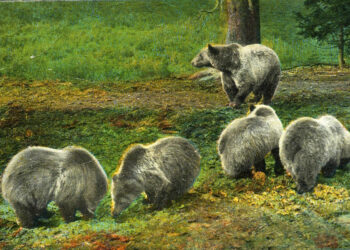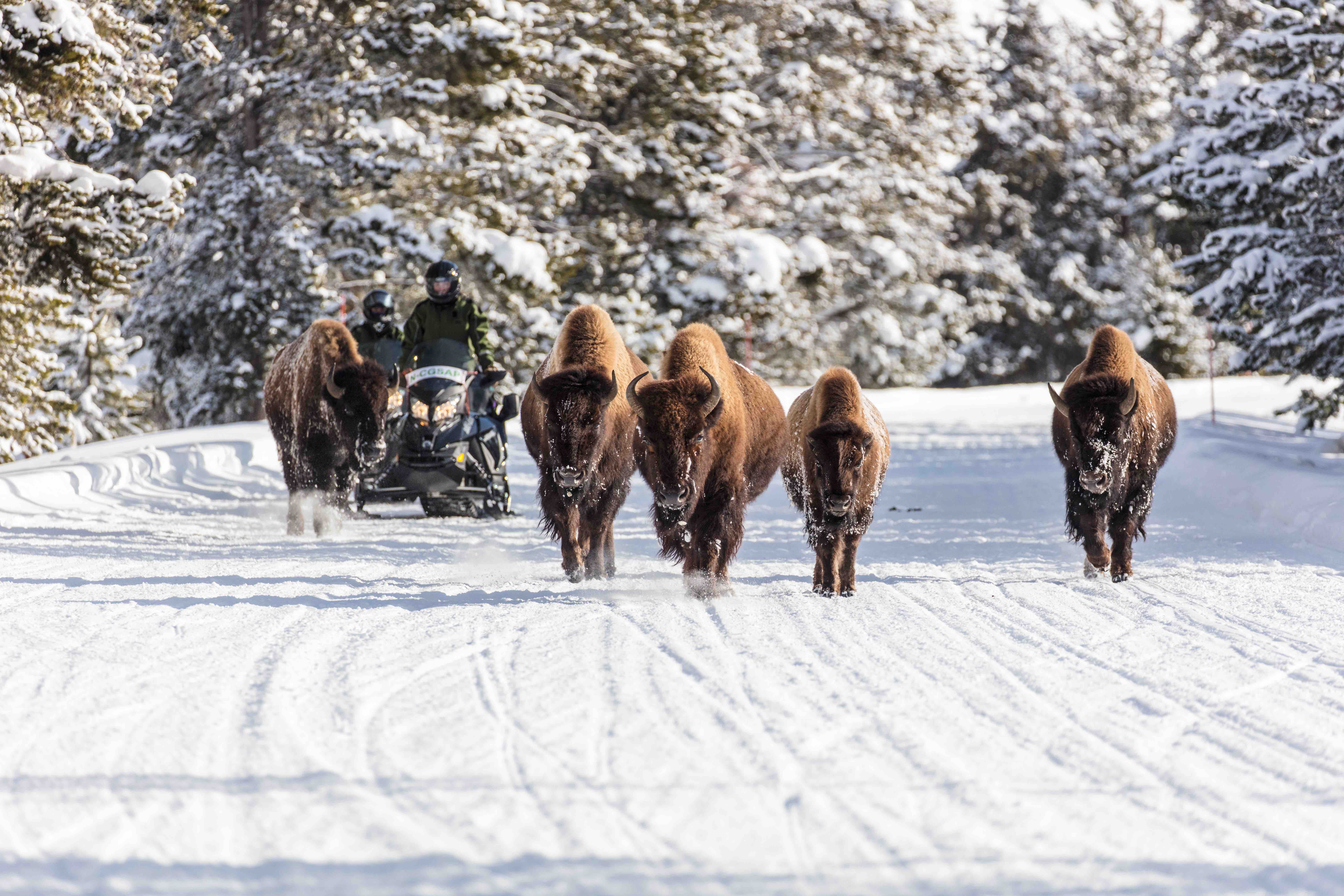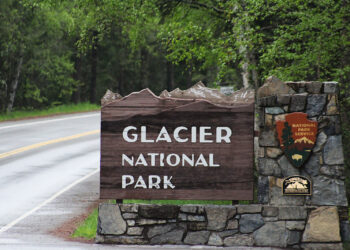
More than four decades ago, Dan Wenk was a college student in Michigan intent upon becoming a professional landscape architect. In a way, he fulfilled his dream. He never thought it would happen being a career civil servant in the employ of the National Park Service.
Today, holding one of the most prestigious and respected posts in government—the superintendency of Yellowstone National Park—Wenk believes the essence of America’s first national park will only be secured not by aspiring to keep setting visitation records but in trying to reduce the impacts of our species.
Wenk’s skill set is equal parts 21st century corporate executive (overseeing a staff of 800 and a budget topping $40 million); tree hugger; motivational speaker; and by the nature of terrain he’s charged with safeguarding, a field marshal.
Years before returning to Yellowstone—he had a stint there earlier in his career—he oversaw Mount Rushmore, the very epitome of an artificial landmark. Like Yellowstone, Rushmore, he says, forces reflection.
“I came to believe that people took away from Mount Rushmore something of what they brought with them,” Wenk says. “If they were veterans of World War II and were highly patriotic, they left with a heightened sense of patriotism. If they were Native Americans with a feeling of oppression, they came away still thinking of [the faces of four white men chiseled into a mountain illegally taken from them] as a travesty imposed upon their native sacred lands.
“But with Yellowstone,” Wenk adds, “I think it has the power to transform, to alter your notion of what nature is, to leave you a little more humbled and kind of stunned to think that the park belongs to you and you can have a feeling of connectedness to the things inside it.”
Wenk doesn’t mince words. Yellowstone is being loved to death and the least studied mammals, he likes to say, are humans. “We have to know more about what rising numbers of people are doing to impact the visitor experience and most importantly the irreplaceable wonders they are coming to see. We can’t continue to have double digit increases in visitation without knowing exactly what the impacts already are.”
Could a public transportation system work to lessen the crushing impacts brought by cars and private tour busses?
A quarter century ago, U.S. Sen. Malcolm Wallop of Wyoming asked the Park Service to study the feasibility of having monorails built in Yellowstone, but it was dismissed by the agency as too expensive. The upfront costs of constructing monorails were 15-30 times the price per mile of rebuilding the highways. The irony with monorails, some claimed, is that many more people could have actually moved through the park, resulting in less physical impact.
Even with frontcountry crowds, some see the backcountry as being “underutilized” and want more activities—something Wenk says is a bad idea because the goal shouldn’t be to fill up the park with as many people as possible.
Ecologists note that Yellowstone, by itself, isn’t large enough to sustain viable wildlife populations and packing more of us into the backcountry will only exacerbate stresses on those creatures, especially as climate change alters habitat. “Unfortunately, there are people who want us to take the risk in order to serve their own selfish desires,” Wenk said. “They want it because it’s forbidden fruit and they don’t care of the consequences it would have.”
In recent years, Wenk presided as chairman of the Greater Yellowstone Coordinating Committee, the interagency body entrusted to look at land management issues across invisible human-drawn boundaries. He pressed colleagues with the Forest Service and sister agencies in the Department of the Interior, the Fish and Wildlife Service and Bureau of Land Management, to be more attentive of how the impacts of decisions ripple across jurisdictions.
He pressed the Forest Service to welcome park bison and to have the Fish and Wildlife Service become better advocates for protecting transboundary park grizzly bears. In many instances, he ran into a brick wall, observers say. Many agencies are still stuck in their “silos mentalities,” still reticent to embrace ecosystem management as the vision was initially presented decades ago.
“I think Yellowstone and places like Yellowstone can survive because they’re becoming more important to segments of our population than they were before,” Wenk says. “Our society will not let them go. The challenge does not involve a larger societal question but it’s really one that should be directed to people in the region making decisions on a daily basis that all add up—county commissioners and city councils and other kinds of elected officials. And people willing to accept limits and self-restraint in order to hold onto something greater.
“We need leadership,” he adds. “We need ecosystem actions to match the ecosystem rhetoric.”
The reporting in this piece was based on interviews Wilkinson did with Wenk for stories that appeared in both National Geographic and Mountain Outlaw magazines.
Todd Wilkinson is an award-winning journalist who has been writing about the West for more than 30 years and his column the New West has been widely read in the Greater Yellowstone region for nearly as long. He writes his column every week, and it’s published on explorebigsky.com on EBS off weeks. You can also read and get signed copies of his latest book, “Grizzlies of Pilgrim Creek,” a story about famous Greater Yellowstone grizzly 399 featuring photographs by Thomas Mangelsen.















